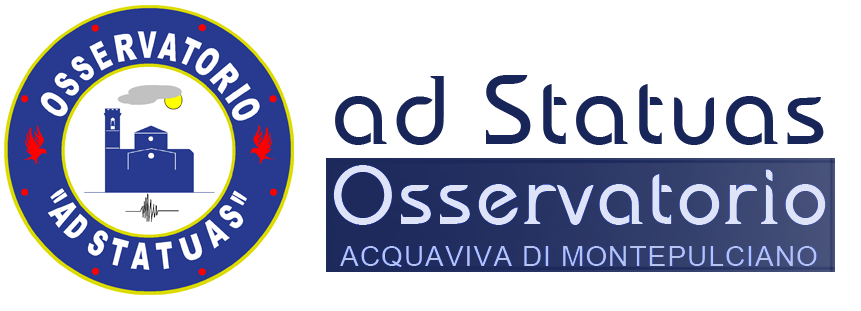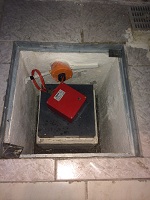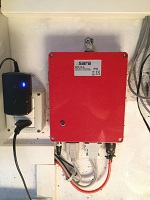The “ad Statuas” seismic Observatory is made up of a professional triaxial seismograph (version SR04) made by SARA Electronic Instruments.
The hardware consists of two elements: a 3-electrodynamic-sensor pack, with a resonance rated frequency of 2 Hz; the sensors are orthogonal to each other and play the role of transducers; a digitizer with a 24 bit volume range, which converts the measured analog signal to digital form.
The digitizer is connected to a PC which processes the signal through a software and provides the seismograms related to the following channels: vertical, North-South and East-West.
The website shows the three analysis in the time domain, namely the classical seismograms and the three analysis in the frequency domain, by means of the Fast Fourier Transform operation, which enables to see the basic energy spectrum of central Italy.
The software also enables to carry out other kinds of measurements. Yet, in addition to the 2 Hz rated frequency of the sensors, which guarantees an excellent response in terms of seismic regional/national surveying, what makes this observatory peculiar is the resolution capability of the signal. Indeed, in case of 0.1 and 10 Hz frequencies, it can detect 1 nanometer/second instantaneous-velocities to the soil, namely distances equivalent to the diameter of just some atoms of helium! In this way, it is possible to have an efficient signal equalization to very low frequencies (until 0.05 Hz). Moreover, owing to the broad band, one may also monitor the worldwide seismicity (teleseisms) starting from medium-magnitude earthquakes (M > 5.0).
The equipment is installed in the underground of the building, 2.5 m under the ground floor, inside a specific well. The sensor-pack is positioned in spirit level on a footstall located 6 m underneath the ground. This kind of installation, in spite of the type-C soil, enables to carry out excellent measurements.
As the seismograph is in a urbanized area, with the motorway and the railway quite nearby, anthropic noise is considerable, especially during working days.
All data gathered by the seismic observatory in Acquaviva di Montepulciano are constantly collected by the “Bina” Seismic Observatory in Perugia and the Italian Experimental Seismic Network I.E.S.N. The “ad Statuas” Observatory belongs to the I.E.S.N. and it is called Seismic Observatory of Montepulciano.








